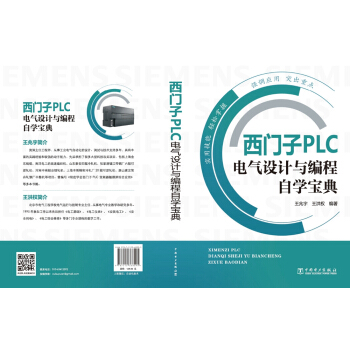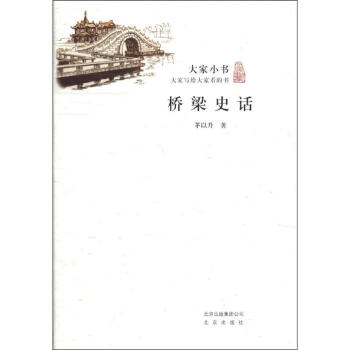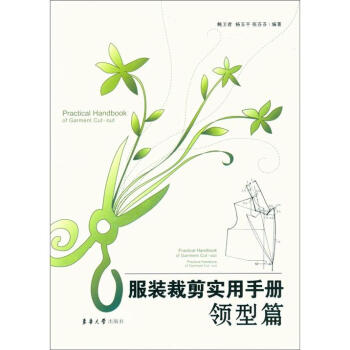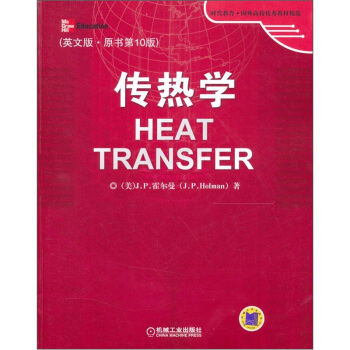

具体描述
内容简介
《传热学(英文版.原书第10版)》是当今最流行的传热学入门教材之一,以简洁明了、容易入门以及包含有大量例题与习题而著称。《传热学(英文版.原书第10版)》写作深入浅出,图文并茂,生动活泼,趣味性强,突出了以读者为主的写作思想。
《传热学(英文版.原书第10版)》体系完整,内容全面,包含了传热学学习中热传导、热对流、热辐射和换热器等各个重要方面。
通过百余道无固定答案的设计习题来强化设计训练。
内页插图
目录
出版说明序
guide to worked examplesxi
prefacexv
about the authorxviii
list of symbolsxix
chapter 1 introduction
1.1 conduction heat transfer
1.2 thermal conductivity
1.3 convection heat transfer
1.4 radiation heat transfer
1.5 summary
review questions
problems
references
chapter 2 steady.state conduction-one dimension
2.1 introduction
2.2 the plane wall
2.3 insulation and rvalues
2.4 radial systems
2.5 the overall heat.transfer coefficient
2.6 critical thickness of insulation
2.7 heat.source systems
2.8 cylinder with heat sources
2.9 conduction.convection systems
2.10 fins
2.11 thermal contact resistance
review questions
list of worked examples
problems
references
chapter 3 steady.state conduction-multiple dimensions
3.1 introduction
3.2 mathematical analysis of two.dimensional heat conduction
3.3 the conduction shape factor
3.4 numerical method of analysis
3.5 gauss.seidel iteration
3.6 accuracy considerations
3.7 summary
review questions
list of worked examples
problems
references
chapter 4 unsteady.state conduction
4.1 introduction
4.2 lumped.heat.capacity system
4.3 transient heat flow in a semi.infinite solid
4.4 convection boundary conditions
4.5 multidimensional systems
4.6 summary
review questions
list of worked examples
problems
references
chapter 5 principles of convection
5.1 introduction
5.2 viscous flow
5.3 inviscid flow
5.4 laminar boundary layer on a flat plate
5.5 energy equation of the boundary layer
5.6 the thermal boundary layer
5.7 the relation between fluid friction and heat transfer
5.8 turbulent.boundary.layer heat transfer
5.9 turbulent.boundary.layer thickness
5.10 heat transfer in laminar tube flow
5.11 turbulent flow in a tube
5.12 summary
review questions
list of worked examples
problems
references
chapter 6 empirical and practical relations for forced.convection heat transfer
6.1 introduction
6.2 empirical relations for pipe and tube flow
6.3 flow across cylinders and spheres
6.4 flow across tube banks
6.5 summary
review questions
list of worked examples
problems
references
chapter 7 natural convection systems
7.1 introduction
7.2 free.convection heat transfer on a vertical flat plate
7.3 empirical relations for free convection
7.4 free convection from vertical planes and cylinders
7.5 free convection from horizontal cylinders
7.6 free convection from horizontal plates
7.7 free convection from inclined surfaces
7.8 nonnewtonian fluids
7.9 simplified equations for air
7.10 free convection from spheres
7.11 free convection in enclosed spaces
7.12 summary
7.13 summary procedure for all
convection problems
review questions
list of worked examples
problems
references
chapter 8 radiation heat transfer
8.1 introduction
8.2 physical mechanism
8.3 radiation properties
8.4 radiation shape factor
8.5 relations between shape factors
8.6 heat exchange between nonblackbodies
8.7 infinite parallel surfaces
8.8 radiation shields
8.9 gas radiation
8.10 radiation network for an absorbing and transmitting medium
8.11 radiation exchange with specular surfaces
8.12 formulation for numerical solution
8.13 solar radiation
8.14 radiation properties of the environment
8.15 effect of radiation on temperature measurement
8.16 the radiation heat.transfer coefficient
8.17 summary
review questions
list of worked examples
problems
references
chapter 9 condensation and boiling heat transfer
9.1 introduction
9.2 condensation heat.transfer phenomena
9.3 the condensation number
9.4 film condensation inside horizontal tubes
9.5 boiling heat transfer
9.6 simplified relations for boiling heat transfer with water
9.7 the heat pipe
review questions
list of worked examples
problems
references
chapter 10 heat exchangers
10.1 introduction
10.2 the overall heat.transfer coefficient
10.3 fouling factors
10.4 types of heat exchangers
10.5 the log mean temperature difference
10.6 effectiveness.ntu method
10.7 compact heat exchangers
10.8 heat.exchanger design considerations
review questions
list of worked examples
problems
references
appendix a
tables
a.1 the error function
a.2 property values for metals
a.3 properties of nonmetals
a.4 properties of saturated liquids
a.5 properties of air at atmospheric pressure
a.6 properties of gases at atmospheric
pressure
a.7 physical properties of some common low.melting.point metals
a.8 diffusion coefficients of gases and vapors
in air at 25℃ and 1 atm
a.9 properties of water (saturated liquid)
a.10 normal total emissivity of various surfaces
a.11 steel.pipe dimensions
a.12 conversion factors
前言/序言
用户评价
我必须强调这本书在解决实际工程问题上的实用性,这才是衡量一本好的工程教材的硬标准。它绝非纸上谈兵的理论堆砌,而是处处体现着“工程思维”。例如,在处理换热器设计那一章,它不仅仅给出了经典的LMTD和$epsilon-NTU$方法,更重要的是,它详细讨论了在实际工况下,如何处理流体泄漏、污垢沉积对换热效率的实际影响,甚至还涉及到了材料选择和成本初步估算的问题。这种将理论与工程实际的“接口”处理得如此细致的教材,在市面上是极其稀有的。我记得有一次我在做一个工业冷却系统的优化方案时,书中关于“最小化热阻”的讨论给了我一个全新的角度去审视系统布局,而不是仅仅停留在计算单元热阻上。那些附带的算例,数据都来源于相对真实的工业背景,而不是为了凑数而编造的理想化场景,这让我在应用公式时,能够更清晰地预估结果的合理性范围。对于一名渴望将知识转化为生产力的工程师来说,这本书的实战指导价值是无法估量的。
评分从一个长期从事学术研究的视角来看,这本书最值得称赞的是它对热物理前沿领域的覆盖和整合能力。它并未固步自封于传统的固体、流体、辐射传热的经典三驾马车,而是将现代材料科学中新兴的纳米尺度传热问题,以及高效能源转换技术(如热电材料、先进热管理系统)的理论基础,都进行了恰到好处的引入和阐述。例如,关于界面热阻(Kapitza电阻)的讨论,它不仅回顾了经典理论的局限性,还引入了声子玻尔兹曼输运方程的初步概念,这对于那些希望将研究方向拓展到微纳尺度,或对能源效率极限感兴趣的读者来说,提供了极其宝贵的起点。这种将经典与前沿无缝衔接的编排,使得这本书具有极强的生命力,它不仅仅是记录了已有的知识体系,更像是为下一代热物理研究者绘制了一张未来可期的路线图,确保了学习者在掌握了坚实基础的同时,也对领域内正在发生的最激动人心的变革保持了敏锐的洞察力。
评分这本书在概念的引入和深入层次上做得非常具有匠心,它成功地在“够用”和“深入”之间找到了一个完美的平衡点。对于本科生阶段的学习,它提供的基础理论讲解深入浅出,每一个物理现象的描述都基于清晰的物理图像,而不是一开始就抛出复杂的数学模型。我尤其欣赏作者处理“启发性问题”的方式,它们往往穿插在章节中间,不那么突兀,但又极大地激发了读者的思考欲望。比如,在讲对流传热时,它并没有直接跳到湍流模型,而是先用一个非常贴近生活的例子——烧水壶的加热过程——来解释自然对流和强迫对流的本质区别。这种循序渐进的教学方法,使得基础不扎实的同学也能建立起坚实的物理直觉。而对于研究生阶段的深入研究者,书后那些拓展阅读的建议和涉及到的高级课题(比如非平衡态传热或者辐射的量子理论基础),又提供了足够的深度和广度。这种“一书多用”的设计,让这本书的价值链被极大地延长了,它不像很多教材那样,学完一遍就束之高阁,而是成为了一个可以长期参考的工具书,这一点非常难得。
评分这本书的语言风格极其严谨,学术规范性毋庸置疑,但同时,作者巧妙地运用了一种“对话式”的叙述方式,使得即使是最艰涩的数学推导过程,读起来也少了几分冷冰冰的刻板。举个例子,在介绍能量方程的守恒性推导时,作者会时不时地插入一些类似于“请注意,这里的散度项,实际上就是在告诉我们能量是如何在微小体积元中流动的”这样的引导性语句,这仿佛是一位经验丰富的教授在你的耳边亲自为你讲解。这种“带着你一起思考”的写作手法,极大地提升了阅读的沉浸感和对知识点的内化速度。我发现,当我用这种方式去理解傅里叶定律时,我不再是死记硬背那个负号代表的方向性,而是深刻理解了它是能量流动的自然趋势的数学表达。这种严谨而不失人情味的叙述,确保了我们在学习高级热力学概念时,思维不会轻易迷失在符号的海洋中,而是始终能锚定在清晰的物理图景之上。
评分这本教材的排版和插图设计简直是一场视觉盛宴,对于像我这样需要大量图形辅助理解复杂概念的学习者来说,简直是福音。尤其是那些流程图和热力学循环图,线条清晰,色彩运用得当,即便初次接触热力学领域的读者也能迅速把握住核心逻辑。我记得有一次在啃一个关于多孔介质传热的章节时,书中的三维示意图清晰地展示了热流的方向和梯度变化,让我那种原本一头雾水的感觉瞬间烟消云散。相比于我之前看过的其他教材,这本书在图文结合方面做得尤为出色,它不是简单地把图片堆砌在文字旁边,而是通过精妙的布局,让图文互相印证,形成一种自然的阅读节奏。而且,很多关键的方程推导部分,作者都辅以了大量的几何辅助图,这极大地减轻了纯代数推导带来的抽象感。即便是那些看似枯燥的边界条件讨论,通过配图也能变得生动起来。如果说有什么可以挑剔的,或许是某些复杂的数值模拟结果图谱,在印刷质量要求极高的情况下,偶尔会觉得某些细节的锐度可以再提高一点点,但这绝对是吹毛求疵了,整体而言,视觉体验绝对是行业顶尖水平,让人愿意沉下心来,细细品读每一个细节。
评分挺好的,印刷也可以!!!
评分正宗的,书的质量挺好,既学习了英语又学习了专业。
评分书皮特别脏。
评分印刷清晰 排版合理 只是快递包装需要改进
评分這本原價頗為昂貴的書居然可以在京東以相當便宜的價格購買正版,太讓人驚訝了,雖然是閹割版但作為入門足夠了
评分通过百余道无固定答案的设计习题来强化设计训练。
评分《传热学(英文版.原书第10版)》写作深入浅出,图文并茂,生动活泼,趣味性强,突出了以读者为主的写作思想。
评分通过百余道无固定答案的设计习题来强化设计训练。 《传热学(英文版.原书第10版)》是当今最流行的传热学入门教材之一,以简洁明了、容易入门以及包含有大量例题与习题而著称。
评分《传热学(英文版.原书第10版)》体系完整,内容全面,包含了传热学学习中热传导、热对流、热辐射和换热器等各个重要方面。
相关图书
本站所有内容均为互联网搜索引擎提供的公开搜索信息,本站不存储任何数据与内容,任何内容与数据均与本站无关,如有需要请联系相关搜索引擎包括但不限于百度,google,bing,sogou 等
© 2025 book.coffeedeals.club All Rights Reserved. 静流书站 版权所有



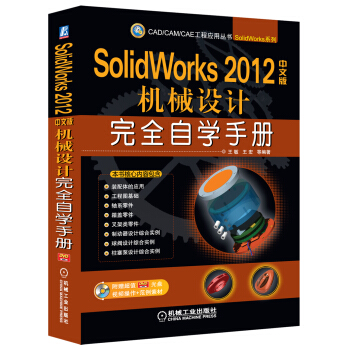

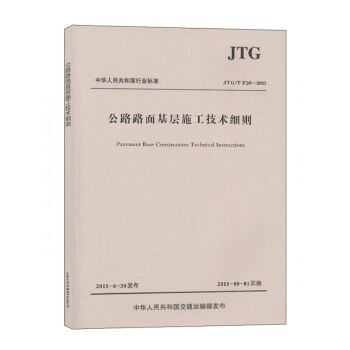
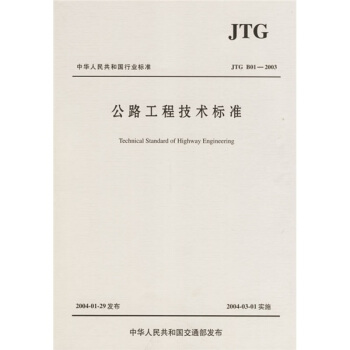
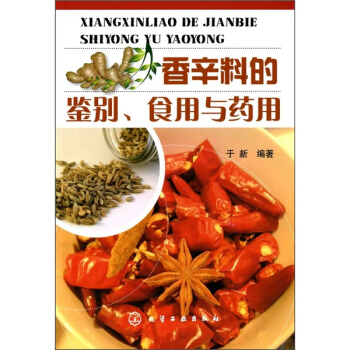
![聚氨酯原料及助剂手册(第2版) [Handbook of Raw Materials and Additives for Polyurethanes] pdf epub mobi 电子书 下载](https://pic.windowsfront.com/11157545/rBEHalDvzocIAAAAAAijKKnkB9sAADmSgF0vBAACKNA794.jpg)
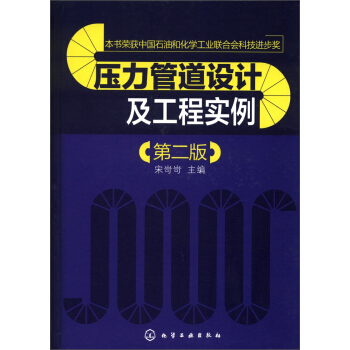
![太阳能光伏技术与应用 [Solar Photovoltaic Technologies and Applications] pdf epub mobi 电子书 下载](https://pic.windowsfront.com/11361625/rBEhWlKpD_oIAAAAAAJD5XJILSkAAGqdAP1n9AAAkP9160.jpg)
![低品位热能转换过程及利用:有机物工质发电及制冷 [Conversion Process and Utilization of Low Grade Heat Hnergy Powew Generation and Refriggeration Using Organic Working Fluid] pdf epub mobi 电子书 下载](https://pic.windowsfront.com/11664693/550fcadeNbbc320c0.jpg)

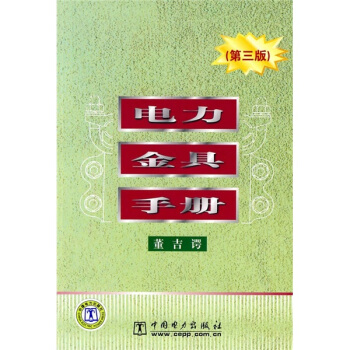
![公路工程施工安全技术规范(JTG F90—2015) [Safety Technical Specifications For Highway Enginccring Construction] pdf epub mobi 电子书 下载](https://pic.windowsfront.com/11687496/555e7f5bNfcfe7a73.jpg)



